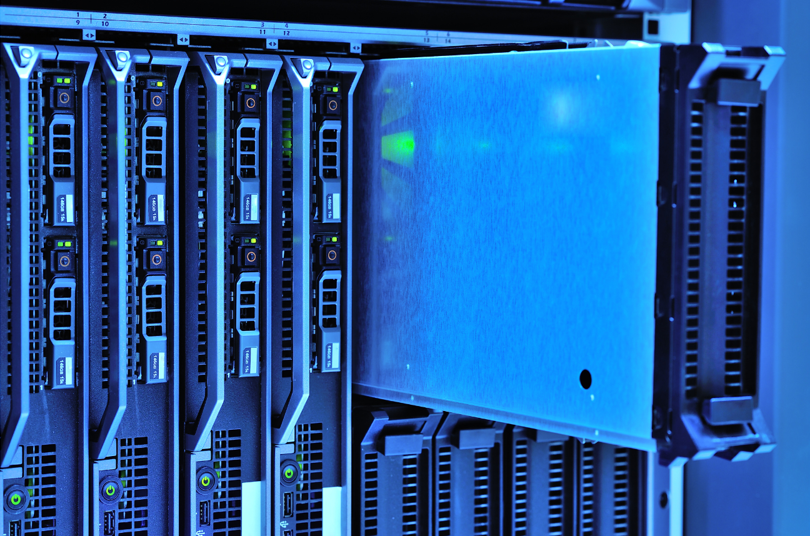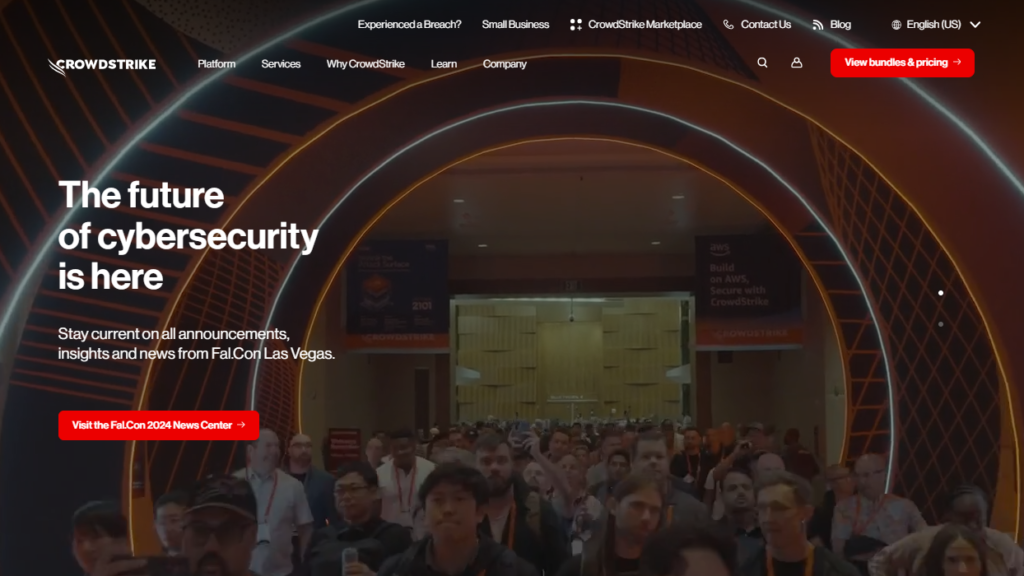In the ever-evolving landscape of cybersecurity, unexpected events can send shockwaves through the digital world.
On July 19, 2024, one such incident occurred that left businesses, organizations, and individuals scrambling to maintain operations.

The Crowdstrike outage, a self-inflicted wound by one of the leading cybersecurity firms, serves as a stark reminder of the fragility of our interconnected systems and the paramount importance of robust, resilient infrastructure.
As John S. Rhodes of the Rhodes Brothers aptly put it, “You really do not want to have a single point of failure in your business.” This statement encapsulates the core lesson we can extract from the Crowdstrike incident, highlighting the need for redundancy, constant evaluation, and proactive risk management in our increasingly digital world.
TL;DR
- Crowdstrike’s update on July 19, 2024, caused widespread system crashes
- The outage affected airlines, hospitals, retail, and even the Paris Olympics organizers
- Key takeaway: Avoid single points of failure in business and technology
- Importance of redundancy, constant evaluation, and backup systems
- Lessons for businesses of all sizes in risk management and operational resilience
Understanding the Crowdstrike Outage
The Crowdstrike incident began innocuously enough with a routine update to Windows systems. However, what should have been a standard procedure quickly spiraled into a catastrophic event.
A configuration error in the update triggered a logic error, resulting in system crashes and the infamous “blue screen of death” across countless devices.
It’s crucial to note that this wasn’t the result of a cyberattack. As Rhodes emphasized, “It was not a Cyber attack that caused the issue, it was the actual upgrade. It was a self-inflicted wound.” This distinction is vital for understanding the nature of the problem and the lessons we can derive from it.
Domino Effect – When Technology Fails, The World Stumbles
In our interconnected world, a single technological hiccup can set off a chain reaction that ripples across industries and continents. The Crowdstrike outage wasn’t just a blip on the radar; it was a seismic event that shook the foundations of our digital dependence. Let’s explore how this digital disruption cascaded through various sectors, leaving chaos in its wake.
Grounded Dreams and Stranded Travelers
Picture this: You’re at the airport, luggage in hand, ready for that long-awaited vacation. Suddenly, the departure board flickers and goes dark. This nightmare scenario became reality for thousands of passengers when the Crowdstrike outage hit. Airlines, reliant on complex digital systems for everything from bookings to flight plans, found themselves in a tailspin. The result? A sea of confused and frustrated travelers, their plans up in the air – quite literally.
The human cost of these travel disruptions goes beyond mere inconvenience. Think of the missed weddings, the delayed business deals, the family reunions put on hold. Each canceled flight represents a tapestry of personal stories and expectations, all unraveled by a technological failure miles away.
Hospitals in Limbo
In an era where every patient file and medical device is networked, a tech failure can quickly escalate into a life-or-death situation. The outage forced some hospitals to shut their doors, a chilling reminder of how vulnerable our healthcare system can be. Imagine the anxiety of patients turned away, the stress on medical staff trying to maintain care with limited resources, and the potential long-term consequences of delayed treatments.
This situation raises crucial questions about the balance between technological advancement and failsafe measures in healthcare. How do we ensure that the systems designed to save lives don’t end up putting them at risk?
Retail Chaos
The next time you breeze through a self-checkout, spare a thought for the shoppers caught in the Crowdstrike crossfire. Picture the scene shopping carts full, queues growing, and not a functioning terminal in sight. It’s not just about the inconvenience; it’s about the ripple effect on local economies, the stress on store staff, and the potential food waste as perishables sit unpurchased.

This disruption serves as a wake-up call for retailers. In our rush to automate and digitize, have we created new vulnerabilities? How can businesses balance efficiency with resilience?
When Global Events Meet Global Outages
Even the grandest of international spectacles aren’t immune to the butterfly effect of tech failures. The organizers of the upcoming Paris Olympics, already juggling a thousand moving parts, found themselves facing unexpected hurdles due to the outage. It’s a stark reminder that in today’s world, local problems can quickly become global concerns.
Think about the years of planning, the massive investments, and the dreams of thousands of athletes – all potentially impacted by a glitch in the matrix. How do we safeguard events of this scale against the unpredictability of our digital infrastructure?
Backup Plans
In the digital realm, a good backup strategy is your time machine. When disaster strikes, it lets you wind back the clock to a point before everything goes haywire.
Consider the case of Pixar, who nearly lost Toy Story 2 due to an errant command that started deleting files. Their salvation? A backup that an employee had fortuitously made on her home computer.
Modern cloud backup solutions like Backblaze or Carbonite can automatically back up your data in real-time. It’s like having a digital safety deposit box that’s constantly being updated. For businesses, enterprise solutions like Veeam offer comprehensive backup and recovery options that can have you back up and running in minutes, not days.
Mapping the Digital Labyrinth
Understanding your tech stack is like having a detailed map of a complex maze. Without it, you’re just stumbling around in the dark when things go wrong.
Tools like IT asset management software can help you keep track of all your hardware and software. Platforms like Spiceworks offer free solutions for small businesses, while larger enterprises might opt for more comprehensive tools like ServiceNow.
But it’s not just about having a list. It’s about understanding how all the pieces fit together. Regular architecture reviews and documentation updates are crucial. Think of it as creating a constantly updated blueprint of your digital house.
Building Resilience
Resilience isn’t just a buzzword; it’s a survival skill in the digital age. It’s about creating an organization that can bend without breaking when the technological winds blow strong.
Companies like Slack have built resilience into their culture. They regularly conduct “game days” where they simulate outages and other crises, training their teams to respond effectively under pressure.
For smaller organizations, even simple tabletop exercises can help build this muscle. Gather your team, present a hypothetical crisis scenario, and work through how you’d respond. It’s like a fire drill for your digital operations.
Tools like PagerDuty‘s Incident Response can help streamline your response to real crises, ensuring that the right people are notified and can collaborate effectively when things go wrong.
As we navigate the choppy waters of our digital future, these lessons from the Crowdstrike outage serve as our compass. By embracing redundancy, relentless testing, robust backups, deep system knowledge, and a culture of resilience, we can weather the storms that inevitably come our way.
Remember, in the words of Nassim Nicholas Taleb, “Antifragility is beyond resilience or robustness. The resilient resists shocks and stays the same; the antifragile gets better.” Let’s aim not just to survive the next digital disaster, but to emerge stronger from it.
Actionable Steps for Digital Resilience
In the wake of the Crowdstrike outage, it’s clear that digital resilience isn’t just for tech giants—it’s crucial for everyone. Here’s a breakdown of practical, step-by-step strategies for different groups to enhance their digital resilience:
For Small Business Owners:
- Implement a 3-2-1 Backup Strategy
- Create 3 copies of your data
- Store them on 2 different types of media
- Keep 1 copy off-site
- Use tools like Backblaze or Carbonite for automated cloud backups.
- Diversify Your Tech Stack
- Avoid relying on a single vendor for critical services
- Use a mix of cloud and on-premises solutions
- Consider hybrid solutions that can work offline and online
- Conduct Regular Security Audits
- Use free tools like OpenVAS for vulnerability scanning
- Perform quarterly internal security reviews
- Consider annual third-party audits for more comprehensive assessments
- Develop an Incident Response Plan
- Create a step-by-step guide for various scenarios (e.g., data breach, system outage)
- Assign roles and responsibilities to team members
- Regularly update and practice the plan through tabletop exercises
- Invest in Employee Training
- Conduct monthly cybersecurity awareness sessions
- Use platforms like KnowBe4 for phishing simulations and training
- Encourage a culture of security consciousness
For IT Professionals:
- Implement Redundancy Across Systems
- Set up failover systems for critical infrastructure
- Use load balancers to distribute traffic across multiple servers
- Implement multi-region cloud deployments for key services
- Adopt a DevOps Approach
- Implement continuous integration and deployment (CI/CD) pipelines
- Use infrastructure-as-code tools like Terraform for reproducible environments
- Regularly practice disaster recovery scenarios
- Enhance Monitoring and Alerting
- Set up comprehensive monitoring using tools like Prometheus and Grafana
- Implement automated alerting systems (e.g., PagerDuty) for quick response to issues
- Use AI-powered anomaly detection tools to catch potential issues early
- Conduct Regular Penetration Testing
- Schedule quarterly internal penetration tests
- Engage external pen-testing firms annually
- Implement bug bounty programs for continuous security feedback
- Implement Zero Trust Architecture
- Adopt the principle of “never trust, always verify”
- Use tools like Okta or Azure AD for identity and access management
- Implement micro-segmentation in your network architecture
For Individual Users:
- Use Multi-Factor Authentication (MFA)
- Enable MFA on all accounts that support it
- Use authenticator apps instead of SMS where possible
- Consider hardware security keys for critical accounts
- Create a Personal Backup Strategy
- Use cloud storage solutions like Google Drive or Dropbox for important files
- Keep an external hard drive for local backups
- Consider encrypted backup solutions for sensitive data
- Practice Good Password Hygiene
- Use a password manager like LastPass or 1Password
- Create unique, strong passwords for each account
- Regularly update passwords, especially for critical accounts
- Stay Updated
- Enable automatic updates on all devices and software
- Regularly check for firmware updates on routers and IoT devices
- Replace devices that no longer receive security updates
- Educate Yourself on Phishing and Social Engineering
- Learn to identify phishing emails and suspicious links
- Be cautious about sharing personal information online
Use tools like Have I Been Pwned to check if your data has been compromised
Remember, digital resilience is an ongoing process, not a one-time fix. Regularly review and update your strategies to stay ahead of evolving threats and technological changes. By taking these steps, you’ll be better prepared to weather the next digital storm, whether you’re running a business, managing IT infrastructure, or simply navigating the digital world as an individual user.
Common Mistakes to Avoid in Digital Resilience
In the aftermath of the Crowdstrike outage, it’s crucial to understand not just what to do, but what not to do. Let’s dive into some common pitfalls in digital resilience and how to sidestep them.
The “It Won’t Happen to Me” Syndrome
- Mistake: Believing your business or personal data is too insignificant to be targeted.
- Solution: Recognize that cyber threats don’t discriminate by size or importance. Implement basic security measures regardless of your perceived risk level. Use tools like Bitdefender or Malwarebytes for comprehensive protection, even on personal devices.
Overreliance on a Single System or Vendor
- Mistake: Putting all your digital eggs in one basket.
- Solution: Diversify your tech stack across multiple providers. For cloud services, consider a multi-cloud approach using platforms like Google Cloud and AWS in tandem. Maintain on-premises backups alongside cloud solutions.
Neglecting Regular Updates and Patches
- Mistake: Postponing software updates due to inconvenience or oversight.
- Solution:Enable automatic updates wherever possible. Use patch management tools like ManageEngine Patch Manager Plus for business environments. Set a monthly “update day” to manually check and update software that doesn’t auto-update.
Inadequate or Untested Backup Systems
- Mistake: Having backups but never testing their effectiveness.
- Solution: Schedule quarterly backup restoration tests. Use backup validation tools like Veeam One for enterprise environments. For personal use, regularly attempt to access and open files from your backups.
Lack of Employee Training and Awareness
- Mistake: Assuming technical solutions alone are enough to ensure security.
- Solution: Implement regular cybersecurity training programs.Use platforms like SANS Security Awareness for comprehensive training materials. Conduct simulated phishing tests to keep employees alert.
Ignoring the Human Element in Security
- Mistake: Focusing solely on technical solutions while overlooking physical and social engineering threats.
- Solution: Implement strict visitor policies and access controls in physical workspaces. Train employees to be cautious of tailgating and unauthorized access attempts. Use social engineering testing services to identify weak points in human security.
Reactive Instead of Proactive Security Measures
- Mistake: Waiting for a breach or outage to occur before taking action.
- Solution: Implement continuous monitoring tools like Splunk or ELK stack. Conduct regular vulnerability assessments using tools like Nessus or OpenVAS. Develop and regularly update an incident response plan before it’s needed.
Overlooking Third-Party Risks
- Mistake: Focusing only on internal systems while neglecting the security of partners and vendors.
- Solution: Implement a robust vendor risk assessment process. Use tools like SecurityScorecard to continuously monitor third-party security postures. Include third-party risk in your overall security strategy and incident response plans.
Failing to Adapt to Emerging Threats
- Mistake: Sticking to outdated security practices in a rapidly evolving threat landscape.
- Solution: Subscribe to threat intelligence feeds like AlienVault OTX. Regularly attend or watch recordings of cybersecurity conferences like Black Hat or DEF CON. Allocate budget for ongoing security education and tool updates.
Neglecting Physical Infrastructure in Favor of Digital Solutions
- Mistake: Focusing solely on cybersecurity while overlooking physical infrastructure vulnerabilities.
- Solution: Implement robust physical security measures like access control systems and CCTV. Consider environmental threats (power outages, natural disasters) in your resilience planning.Use tools like APC’s InfraStruxure for data center infrastructure management.
By avoiding these common mistakes, you’ll significantly enhance your digital resilience. Remember, resilience is not a one-time achievement but an ongoing process. Stay vigilant, stay informed, and always be ready to adapt to new challenges. As the cybersecurity landscape evolves, so should your strategies for protecting your digital assets.
Statistics and Research
According to a 2024 study by Cybersecurity Ventures, the global cost of cybercrime is expected to reach $10.5 trillion annually by 2025, up from $3 trillion in 2015.
The Ponemon Institute’s 2024 Cost of a Data Breach Report found that the average cost of a data breach in the United States is $9.44 million, the highest in the world.
Frequently Asked Questions
How can small businesses protect themselves from similar outages?
Small businesses can enhance their resilience by diversifying their technology providers, implementing robust backup systems, and regularly testing their disaster recovery plans. It’s also crucial to stay informed about potential vulnerabilities and maintain open communication with your IT service providers.
What immediate steps should a company take if they experience a system-wide outage?
The first step is to activate your incident response plan. This typically involves assembling your crisis management team, assessing the scope of the outage, communicating with affected stakeholders, and initiating your backup and recovery procedures. It’s also important to document all actions taken for later review and improvement.
How often should businesses update their cybersecurity measures?
Cybersecurity measures should be reviewed and updated continuously. At a minimum, conduct a comprehensive review quarterly and after any significant changes to your IT infrastructure. Stay informed about emerging threats and new security technologies to ensure your defenses remain robust.
What role does employee training play in preventing cybersecurity incidents?
Employee training is crucial in preventing cybersecurity incidents. Regular training sessions can help staff recognize potential threats, understand the importance of security protocols, and know how to respond to suspicious activities. Human error is a leading cause of security breaches, so well-trained employees are your first line of defense.
How can businesses balance the need for security with the need for operational efficiency?
Striking this balance requires a strategic approach. Start by identifying your most critical assets and processes, then implement security measures proportional to their importance. Look for security solutions that integrate seamlessly with your existing workflows and consider automation to reduce the burden on your team.
What are some key indicators that a business’s cybersecurity measures may be inadequate?
Warning signs include frequent minor security incidents, difficulty in tracking and managing digital assets, lack of visibility into network activities, outdated software and hardware, and employees bypassing security protocols for convenience. Regular security audits and penetration testing can help identify these weaknesses.
How can businesses effectively communicate with customers during a major outage or security incident?
Transparency and timeliness are key. Prepare a communication plan in advance that outlines who will communicate, what channels will be used, and what information will be shared. Be honest about the situation, provide regular updates, and offer clear guidance on what customers should do. After the incident, follow up with details on how you’re preventing future occurrences.
What are some emerging technologies that businesses should consider for enhancing their cybersecurity?
Artificial Intelligence and Machine Learning are increasingly being used for threat detection and response. Zero Trust Architecture is gaining popularity for its comprehensive approach to security. Blockchain technology is being explored for secure, decentralized data storage. Additionally, quantum-resistant cryptography is an area to watch as quantum computing advances.
How can businesses ensure their remote work policies don’t compromise their cybersecurity?
Implement strong Virtual Private Network (VPN) protocols, require multi-factor authentication for all remote access, use encrypted communication channels, and provide secure, company-managed devices when possible. Regularly update and communicate remote work security policies and conduct specific training for remote workers on best practices.
What lessons can other industries learn from the cybersecurity practices of highly regulated sectors like finance and healthcare?
Highly regulated industries often have more mature cybersecurity practices due to strict compliance requirements. Other industries can learn from their approach to risk assessment, incident response planning, data protection strategies, and regular compliance audits. The emphasis on employee training and the culture of security awareness in these sectors is also valuable for any industry.
Embracing Resilience in an Interconnected World
As we’ve explored the Crowdstrike outage and its far-reaching consequences, it’s clear that in our interconnected digital landscape, resilience is not just a buzzword—it’s a necessity. The incident serves as a stark reminder that even the most sophisticated systems can fail, and the ripple effects can be profound and far-reaching.
The key takeaways from this event are clear:
- Diversify and build redundancy into your systems and processes.
- Constantly evaluate and test your critical infrastructure.
- Maintain robust, frequently updated backup systems.
- Foster a deep understanding of your technology stack and its vulnerabilities.
Cultivate a culture of resilience and adaptability across your organization.
Remember, as John S. Rhodes emphasized, “You need to identify them and then constantly relentlessly religiously dogmatically test them over and over.” This proactive approach to identifying and addressing potential points of failure is crucial in today’s rapidly evolving digital landscape.
The journey towards true digital resilience is ongoing. It requires vigilance, adaptability, and a commitment to continuous improvement. But with the right strategies, tools, and mindset, businesses and individuals can navigate the complex world of cybersecurity with confidence.
We encourage you to take the first step today. Whether it’s conducting a thorough risk assessment, updating your business continuity plan, or investing in employee training, every action you take strengthens your digital defenses and prepares you for the challenges of tomorrow.
For more insights, strategies, and the latest information to help you succeed in the digital age, we invite you to view and subscribe to the Rhodes Brothers YouTube Channel . Stay informed, stay prepared, and stay resilient in the face of our ever-changing digital world.
Resource List
Books
- “The Phoenix Project: A Novel About IT, DevOps, and Helping Your Business Win” by Gene Kim, Kevin Behr, and George Spafford
- “Cybersecurity: The Essential Body of Knowledge” by Dan Shoemaker and Wm. Arthur Conklin
- “The Art of Resilience: Strategies for an Unbreakable Mind and Body” by Ross Edgley
- “Antifragile: Things That Gain from Disorder” by Nassim Nicholas Taleb
- “The Cyber Risk Handbook: Creating and Measuring Effective Cybersecurity Capabilities” by Domenic Antonucci
Podcasts
- “Darknet Diaries” by Jack Rhysider
- “Cyberwire Daily” by N2K Networks
- “Smashing Security” by Graham Cluley and Carole Theriault
- “Security Now” by Steve Gibson and Leo Laporte
- “SANS Internet Stormcenter Daily Network/Cyber Security and Information Security Stormcast”
Courses
- Cybrary – Introduction to IT & Cybersecurity
- edX – Cybersecurity Fundamentals
- Coursera – IBM Cybersecurity Analyst Professional Certificate
- SANS Institute – SEC401: Security Essentials Bootcamp Style
- EC-Council – Certified Ethical Hacker (CEH)
Tools
- Nmap – Network discovery and security auditing
- Wireshark – Network protocol analyzer
- Metasploit – Penetration testing framework
- Snort – Intrusion detection system
- Splunk – Security information and event management (SIEM)
- KeePass – Password management
- Burp Suite – Web application security testing
- Aircrack-ng – Wi-Fi network security assessment
- Nessus – Vulnerability scanner
- OSSEC – Host-based intrusion detection system
Blogs and Websites
Professional Associations
- Information Systems Security Association (ISSA)
- Cloud Security Alliance (CSA)
- OWASP (Open Web Application Security Project)
Government Resources
- NIST Cybersecurity Framework
- US-CERT (United States Computer Emergency Readiness Team)
- ENISA (European Union Agency for Cybersecurity)
- CISA (Cybersecurity and Infrastructure Security Agency)
These resources provide a comprehensive starting point for individuals and organizations looking to enhance their cybersecurity knowledge and capabilities. Remember to regularly update and expand your resource list as new tools, courses, and information sources become available in this rapidly evolving field.





